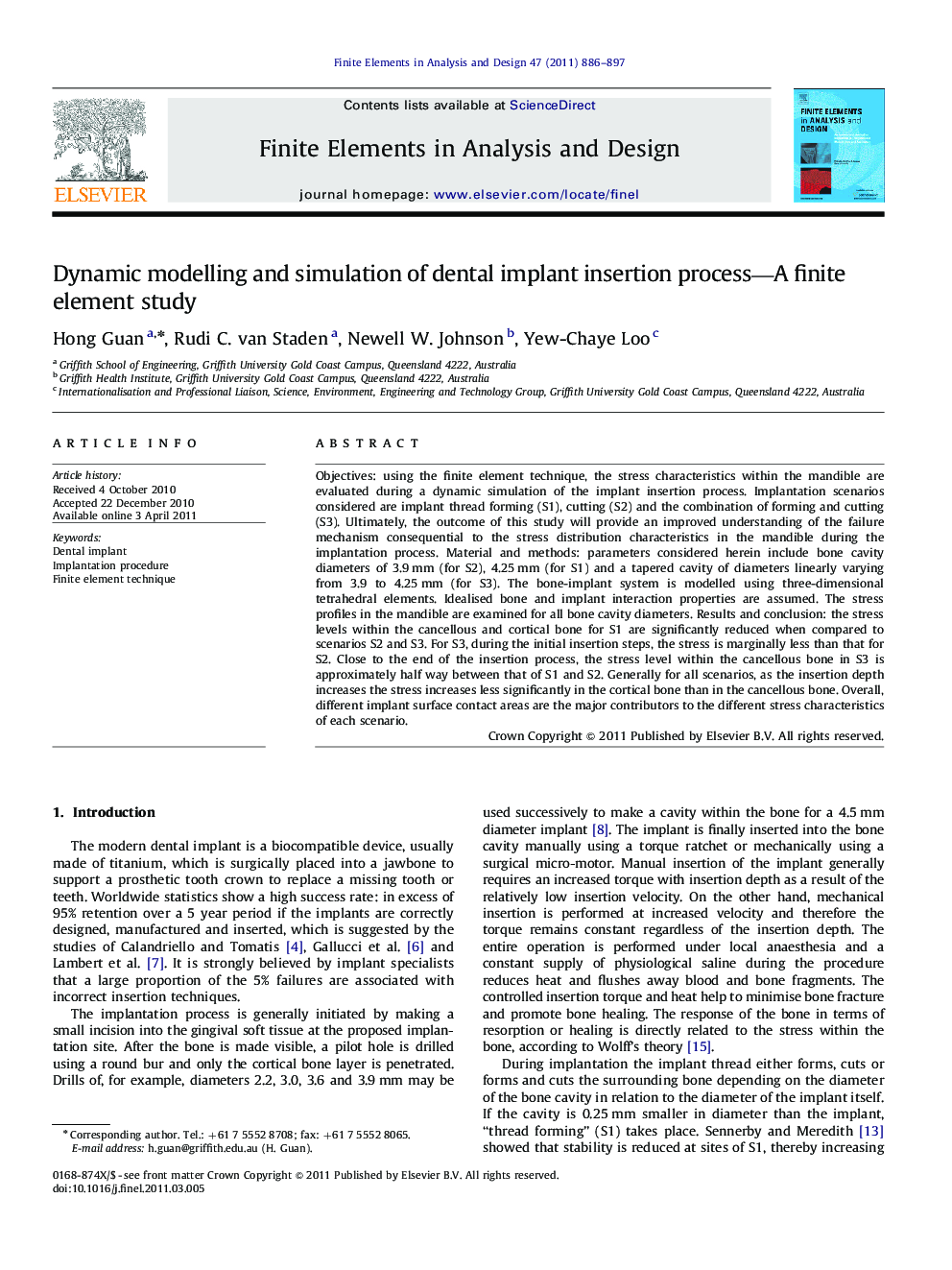| Article ID | Journal | Published Year | Pages | File Type |
|---|---|---|---|---|
| 514630 | Finite Elements in Analysis and Design | 2011 | 12 Pages |
Objectives: using the finite element technique, the stress characteristics within the mandible are evaluated during a dynamic simulation of the implant insertion process. Implantation scenarios considered are implant thread forming (S1), cutting (S2) and the combination of forming and cutting (S3). Ultimately, the outcome of this study will provide an improved understanding of the failure mechanism consequential to the stress distribution characteristics in the mandible during the implantation process. Material and methods: parameters considered herein include bone cavity diameters of 3.9 mm (for S2), 4.25 mm (for S1) and a tapered cavity of diameters linearly varying from 3.9 to 4.25 mm (for S3). The bone-implant system is modelled using three-dimensional tetrahedral elements. Idealised bone and implant interaction properties are assumed. The stress profiles in the mandible are examined for all bone cavity diameters. Results and conclusion: the stress levels within the cancellous and cortical bone for S1 are significantly reduced when compared to scenarios S2 and S3. For S3, during the initial insertion steps, the stress is marginally less than that for S2. Close to the end of the insertion process, the stress level within the cancellous bone in S3 is approximately half way between that of S1 and S2. Generally for all scenarios, as the insertion depth increases the stress increases less significantly in the cortical bone than in the cancellous bone. Overall, different implant surface contact areas are the major contributors to the different stress characteristics of each scenario.
